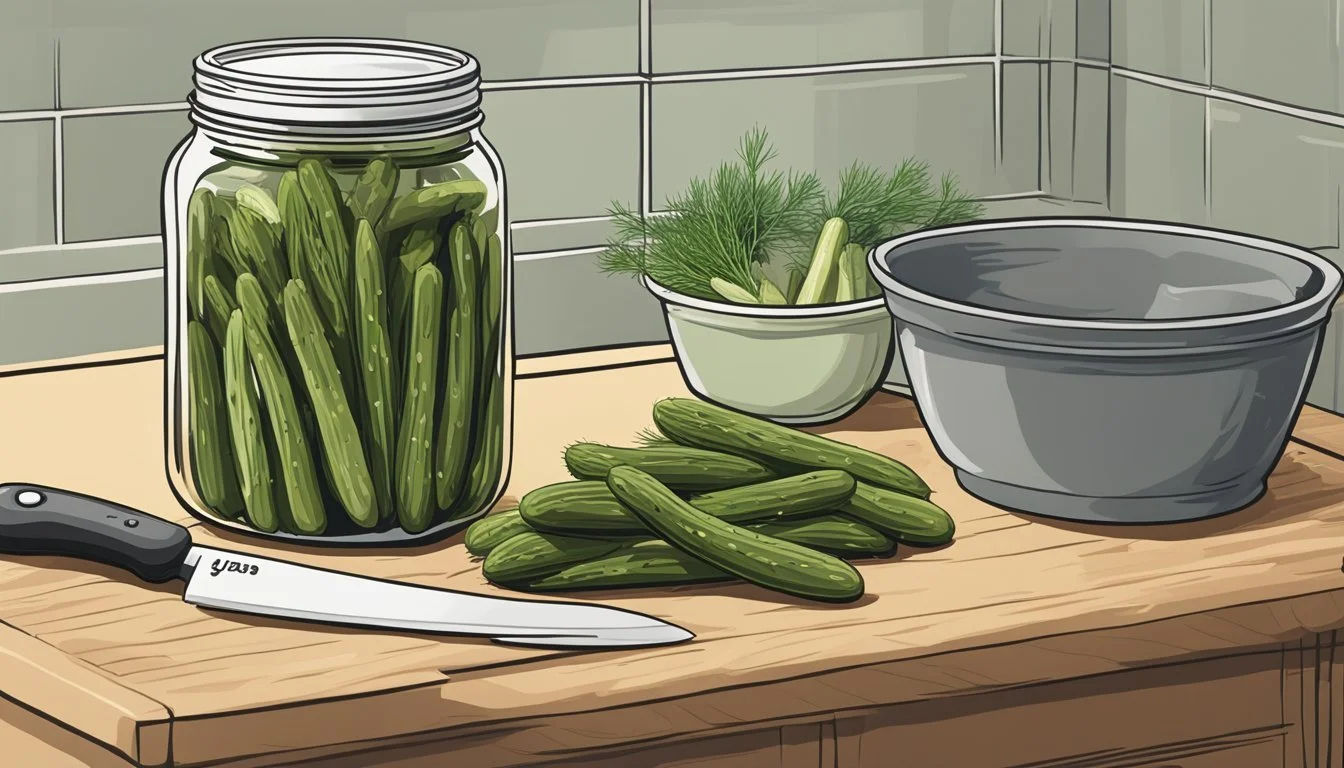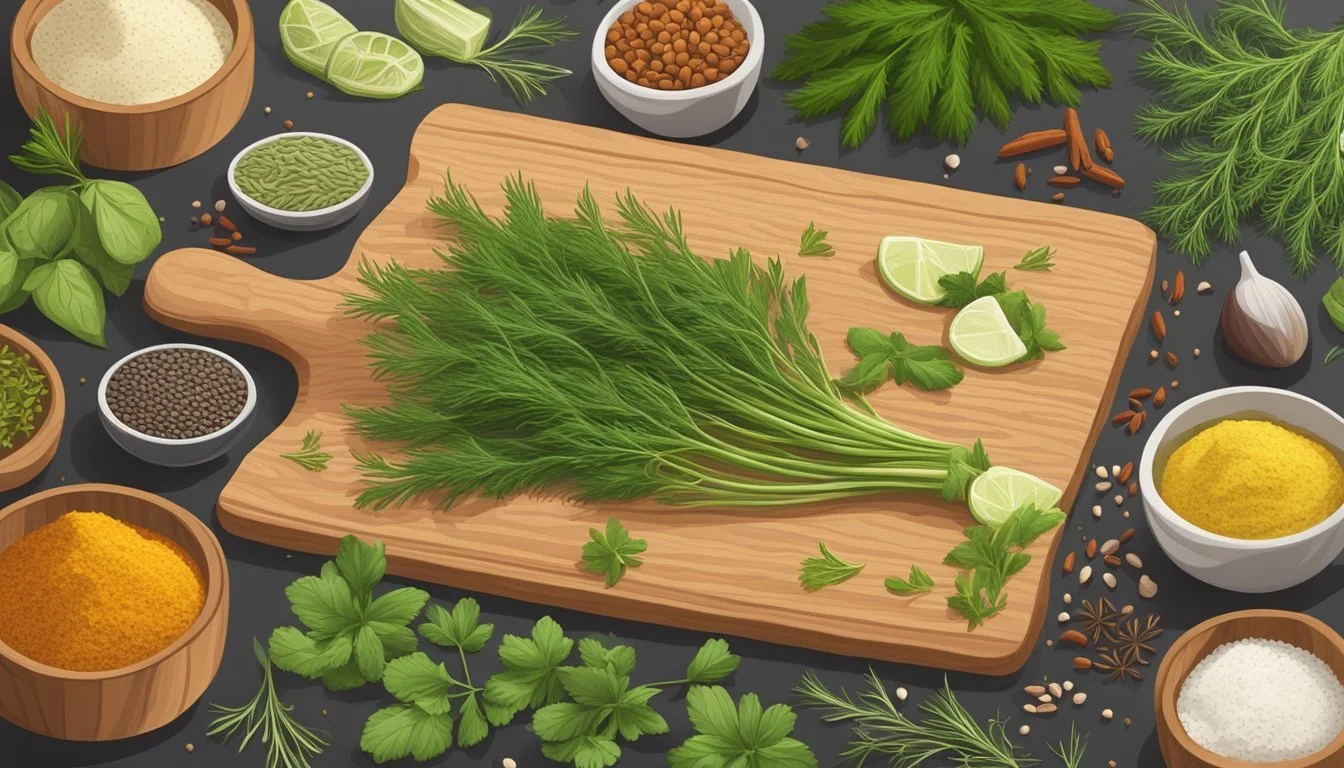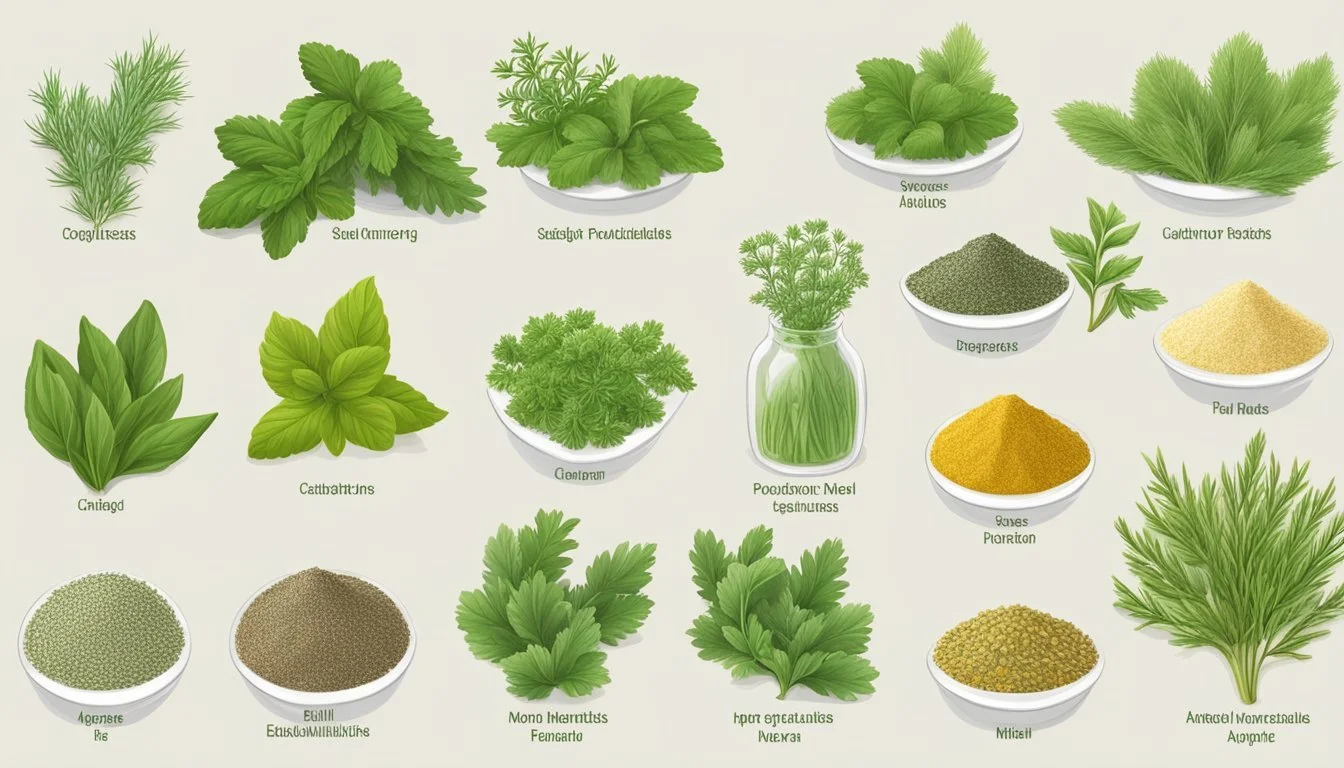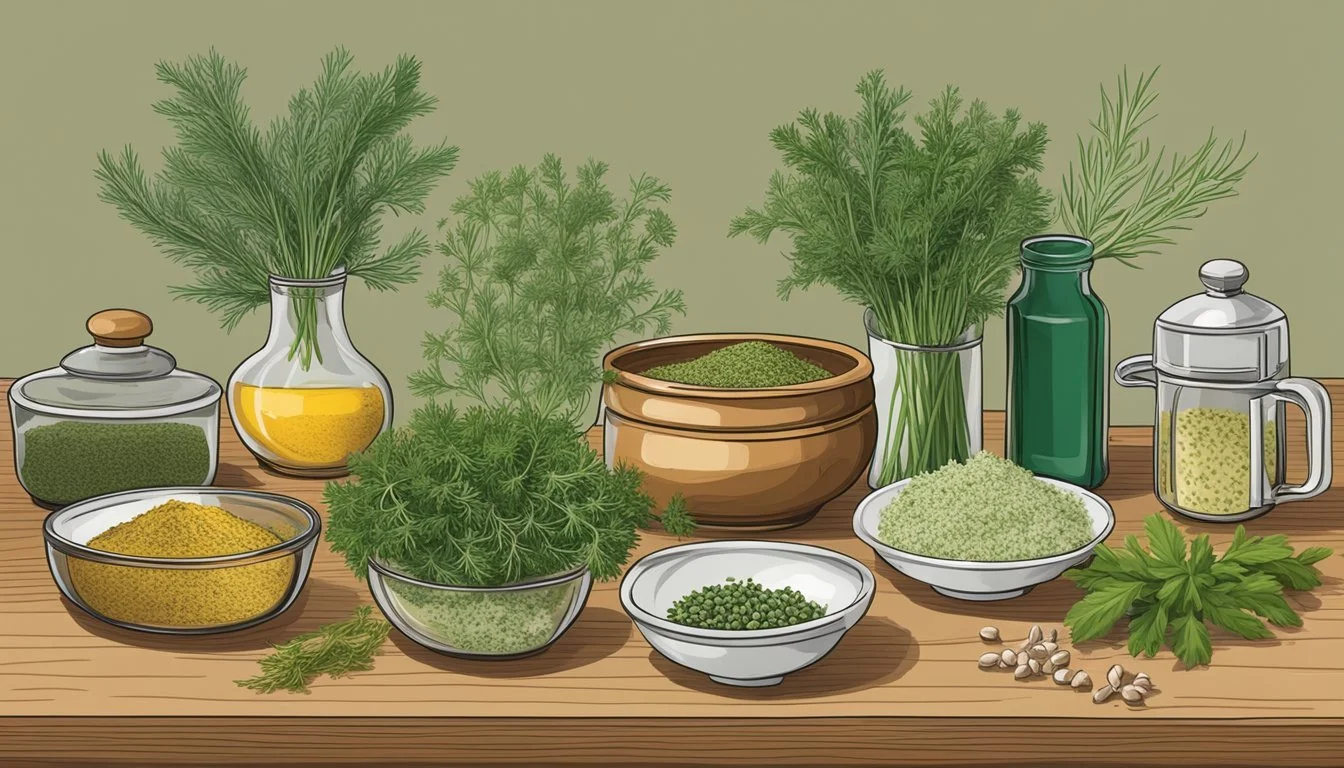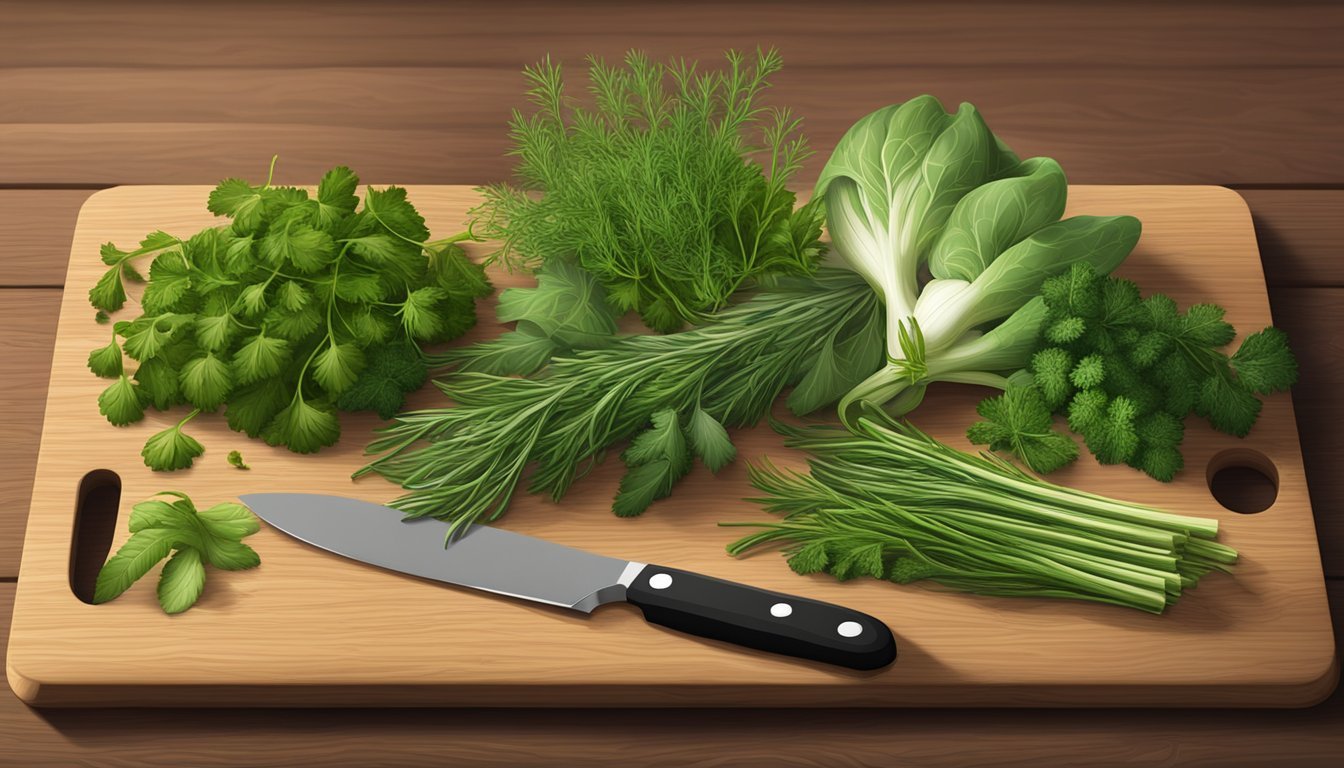Dill Substitutes
Best Alternatives for Your Recipes
Dill is a unique herb that adds a distinctive flavor to numerous dishes, including fish, salads, and sauces. It’s known for its feathery leaves and sweet, grassy, anise-like taste. While fresh dill is often preferred for its vibrant flavor and bright color, dried dill can offer a more concentrated taste. However, there are scenarios where dill isn’t available or when someone may be looking for an alternative due to personal taste preferences or dietary restrictions.
In such cases, it's useful to know which herbs and spices can serve as suitable replacements. The choice of substitute depends on the particular recipe and the role dill plays in it. Herbs like tarragon, parsley, and fennel share similarities with dill and can mimic its flavor in cooking. Each of these herbs brings its own unique profile while complementing the flavors of the dish in a manner similar to dill.
It’s important to note that substitutes may not always mimic dill's flavor perfectly. The aim is to use an herb that will offer a harmonious flavor within the context of the dish. Factors such as texture and aroma are also crucial in choosing an adequate replacement. Cooking methods and preparation can further influence how well an alternative will work in place of dill.
Understanding Dill
Dill is an aromatic herb prized for its unique flavor and versatility in cooking. This section will detail the herb's characteristics and its culinary applications, both in fresh and dried forms.
Characteristics of Dill
The dill plant (Anethum graveolens) features fine, feather-like leaves and produces yellow flowers. It exhibits a distinctive aroma with a warm, slightly bitter edge, and carries a taste often described as a light and grassy flavor with hints of anise and lemon. Fresh dill, known as dill weed, is delicate and loses its flavor rapidly, while dill seeds are more robust with a more pungent taste.
Culinary Uses of Fresh Dill
Fresh dill lends itself well to a variety of dishes due to its mild yet vibrant flavor. It is commonly used as a garnish or to season:
Salads: Its bright taste complements a wide range of vegetables.
Seafood: Often paired with fish for a refreshing zest.
Sauces and Dressings: Adds a fresh kick to creamy or vinaigrette bases.
Pickling: Crucial in lending the traditional dill flavor to pickles.
Culinary Uses of Dried Dill
Dried dill, despite having a less pronounced flavor compared to its fresh counterpart, still holds a place in the culinary world. It's especially effective in:
Dry Rubs: It can be combined with other spices to season meats and vegetables.
Stews and Soups: Delivers a concentrated dill taste that infuses well throughout slow-cooked dishes.
Breads: Incorporated in dough for an aromatic twist.
While both forms of dill serve similar purposes, dried dill can withstand longer cooking times and is more convenient for off-season use when fresh dill may not be available.
Best Fresh Dill Substitutes
When dill is unavailable, there are several fresh herbs that can serve as suitable substitutes. Each alternative offers a unique flavor profile that can complement various dishes where dill is typically used.
Tarragon as a Substitute
Fresh tarragon brings a similar anise-like flavor that is associated with dill, though it has a somewhat sweeter undertone. It works especially well in sauces and with poultry.
Substitution Ratio: Generally, one can substitute an equal amount of fresh tarragon for fresh dill.
Fennel Fronds & Seeds
Both fennel fronds and fennel seeds share a mild anise flavor with dill, making them a perfect replacement in a broad range of recipes.
Substitution Ratio: Use a one-to-one ratio when replacing fresh dill with fennel fronds.
Considerations: Fennel seeds have a more potent flavor, so start with half the amount of dill called for and adjust to taste.
Parsley and Chervil
Fresh parsley offers a bright, clean taste, while chervil features a milder flavor with subtle notes of anise. These herbs add a fresh touch similar to dill without overwhelming the palate.
Substitution Ratio: Replace fresh dill with an equal amount of fresh parsley or chervil.
Best Used: As garnishes or in salads for a color and flavor that mimic dill's characteristics.
Best Dried Dill Substitutes
When seeking a dried dill substitute, one must consider the unique properties and flavors of the herb they are replacing. Dried dill's flavor is aromatic with a slight anise-like quality. Several herbs can act as good substitutes, including dried tarragon, dried thyme and oregano, bay leaves, and rosemary. Each brings its own distinct flavor and should be chosen based on the desired outcome of the dish.
Dried Tarragon
Dried tarragon offers a similar anise-like undertone and is a robust substitute for dried dill. It pairs well with chicken, fish, and in sauces.
Suggested Ratio: Use a 1:1 ratio when replacing dried dill with dried tarragon.
Taste Profile: Licorice-like, slightly sweet.
Dried Thyme and Oregano
Thyme and oregano bring an earthy and minty flavor profile to dishes, respectively. They work well in Mediterranean cuisine.
Suggested Ratio: Start with a 1:1 ratio and adjust to taste.
Taste Profile:
Dried Thyme: Subtle, dry, and slightly minty.
Dried Oregano: Bold, with a peppery bite.
Bay Leaves and Rosemary
Bay leaves and rosemary can be used in stews and soups where their strong flavors harmonize with hearty ingredients.
Suggested Ratio:
Bay Leaves: Use one bay leaf to replace one teaspoon of dried dill, remove after cooking.
Rosemary: Use sparingly as it is more pungent; start with half the amount and adjust to taste.
Taste Profile:
Bay Leaves: Floral and slightly woodsy.
Rosemary: Piney with a lemony touch.
In replacing dried dill with these herbs, one should consider the main flavor profiles of their dish to ensure a complementary taste.
Herb Mixes and Non-traditional Substitutes
When seeking alternatives for dill, one can explore herb mixes and unconventional substitutes that encompass a range of flavors from zesty citrus to robust seeds.
Aromatic Herb Mixes
In culinary practices, aromatic herbs are often mixed to mimic the distinct character of dill. For instance, a blend of marjoram and oregano can provide a similar fragrance and savoriness. Za'atar, a Middle Eastern mix which includes these herbs, can function as a complex substitute in many dishes where dill is required.
Citrus Zest and Peels
Citrus zest or peels contribute a bright, fresh element to dishes, similar to the lightness brought by dill. The zest from lemons or oranges, when used sparingly, offers a different but pleasing twist, with its aromatic citrus oils adding an unexpected yet delightful layer of flavor.
Seed-Based Substitutes
Seeds like caraway, coriander, and cumin can be used as substitutes that bring their own distinct flavors and aromas. These seeds have diverse uses:
Caraway seeds impart a mild anise-like flavor, suitable for breads and cheeses.
Coriander offers a lemony note that complements a variety of dishes.
Cumin has a warm, earthy taste that stands out in robust spice blends.
Pickling Alternatives
Dill is frequently associated with pickled vegetables, but when unavailable, one might resort to pickle juice itself as a dill stand-in to infuse dishes with that iconic pickled flavor. Alternatively, spice blends that are used for pickling, including mixtures of coriander seeds, caraway, and even a touch of citrus peels can be used to achieve a similar taste profile.
Substitutes for Specific Dishes
When cooking, the right substitute can enhance a dish where dill is unavailable. They've curated alternatives perfect for various types of recipes, each offering a unique flavor profile complementing the main ingredients.
Substitutes for Fish and Seafood Dishes
For fish and seafood dishes where dill plays a role in seasoning, one can opt for fresh tarragon due to its similar anise-like undertones. Specifically, with dishes like grilled salmon, tarragon can be a seamless fit. However, if a more citrusy note is desired, parsley combined with a squeeze of lemon juice can also be used.
Salads and Sauces
In salads and dressings, fennel fronds bring a delicate licorice flavor akin to dill. With potato salad or green salads, fennel's feathery texture also mimics dill's appearance. Alternatively, chervil or basil can be used in sauces to introduce a fresh, aromatic quality that complements a wide array of salad ingredients.
Substitutes for Meat and Poultry
For meat dishes, especially poultry like chicken, rosemary or thyme can replace dill. Both have a hearty, warm flavor that pairs well with the savory notes of meats. They advise using half a tablespoon of thyme for every tablespoon of dill to prevent overpowering the dish.
Pasta, Soups, and More
In pasta dishes and soups where dill is called for, bay leaves can serve as a fitting replacement, adding a depth of flavor best released through simmering. For a more robust taste option in these cooked recipes, one could also consider oregano or marjoram, known for their earthy and slightly sweet profiles.
Homemade Herb Alternatives
Homemade alternatives to dill are both feasible and rewarding, offering fresh and dried options suitable for a range of dishes, from Mediterranean to French cuisine.
Growing Your Own Herbs
Individuals can cultivate a variety of herbs in their gardens or indoors to suit their culinary needs. Mediterranean staples such as tarragon and rosemary thrive in well-drained soil and full sunlight. They provide aromatic alternatives to dill, especially in French and Mediterranean recipes. Fennel, with its dill-like fronds and milder licorice flavor, is another herb that can be grown and used in salads and cooked dishes.
Creating Your Own Dill Mix
For those unable to source fresh dill, a homemade dill mix can incorporate other herbs commonly found in household kitchens. By combining dried herbs such as parsley, mint, and a touch of ground fennel seeds, one can create an approximation of dill's flavor. This blend can be directly substituted in recipes calling for dill.
Herbs Proportion Use Parsley 1 part Adds a fresh, grassy taste. Mint 1 part Introduces a cool, fresh aspect to the mix. Ground Fennel 1/2 part Imparts a mild, sweet licorice flavor reminiscent of dill.
Homemade Dried Herbs
Drying one's freshly grown herbs is a way to preserve their flavor for year-round use. For instance, tarragon, which possesses a similar licorice finish to dill, can be dried and stored effectively. To prepare homemade dried herbs, tie the fresh sprigs in a bunch and hang them upside down in a warm, dry, and well-ventilated space away from direct sunlight. Once completely dry, the leaves can be crumbled and sealed in an airtight container.
Tarragon: Store in a tightly sealed jar away from light to maintain its potency.
Rosemary: Dry until the leaves easily crumble, then store in an airtight container.
Choosing the Right Substitute
When selecting a substitute for dill, it's essential to consider both the flavor profiles of the herbs and the quantities needed for an effective substitution, so as to maintain the integrity of the original dish.
Considerations Based on Flavor Profiles
Fresh Dill Substitutes: For a substitute that mimics the mild flavor of fresh dill, options include:
Fennel: With its similar herbaceous and slightly sweet taste, fennel can serve as an excellent alternative, particularly in Mediterranean dishes.
Tarragon: Offers a similar licorice finish and works well in most recipes calling for fresh dill.
Dried Dill Substitutes: When substituting for dried dill, one should seek herbs that provide a pungent or bitter edge, such as:
Thyme: Though more intense, it can replace dried dill, especially in meat dishes and stews.
Oregano and Marjoram: Both offer robust flavors suitable for a variety of dishes, from soups to grilled meats.
Dill Seed Substitutes: Dill seeds have a more concentrated flavor and typically require substitutes that can replicate their unique taste:
Coriander Seeds: For recipes that need that particular warm and citrus-like quality of dill seeds.
Caraway Seeds: Often used in bread-making, they can also substitute dill seeds due to their similar aromatic profile.
Adjusting Quantities for Substitution
To accurately substitute different herbs for dill, consider the intensity of the flavor they bring. Here's a quick guide on how to adjust quantities:
Substitute Herb Suggested Quantity for Substitution Tarragon Equal parts to fresh/dried dill Thyme Half the amount of dill Fennel Use sparingly; strong anise-like flavor Oregano/Marjoram Use three-quarters the amount of dill Caraway Seeds Same as dill seeds for a similar taste Coriander Seeds Start with half the amount, adjust to taste
For herbs with more potent flavors like thyme and oregano, it's best to start with less and add incrementally. Conversely, for those with a sweeter, milder flavor, such as fennel, one might need to use a larger amount to achieve a comparable dill-like quality in the dish.

